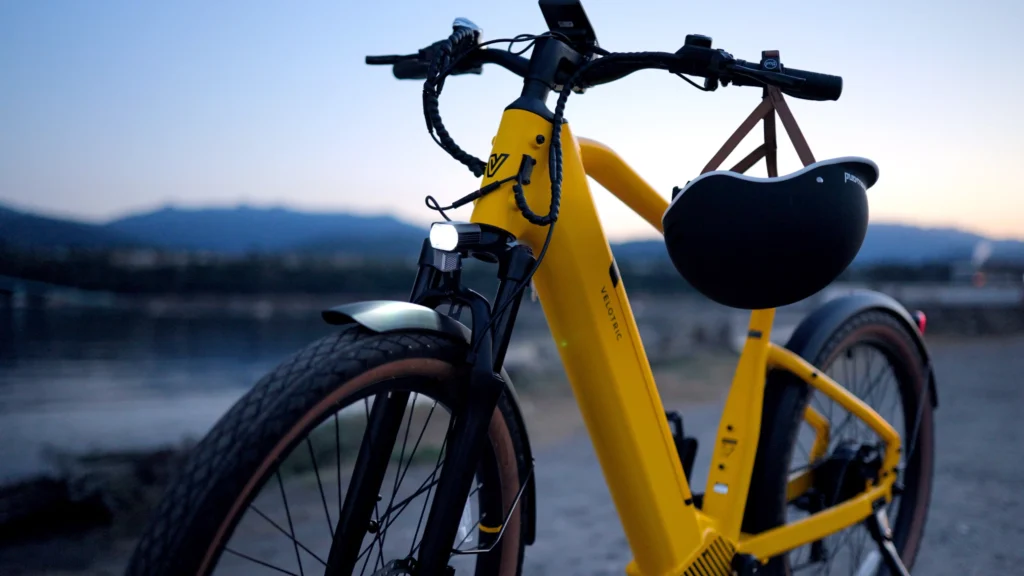Electric bicycle scooters, or e-scooters, offer a convenient and eco-friendly mode of transportation. However, ensuring safety while riding an e-scooter is paramount.
Regular safety inspections can help prevent accidents and extend the life of your scooter. This article provides a comprehensive guide to conducting safety inspections for your electric bicycle scooter.
1. Battery and Electrical System
The battery and electrical system are crucial for the scooter’s operation.
- Battery Charge: Ensure the battery is adequately charged before each ride. Avoid starting your journey on a low battery to prevent being stranded.
- Battery Condition: Inspect the battery for any visible damage, such as cracks or leaks. Replace any damaged battery immediately.
- Wiring and Connections: Check all electrical wiring and connections for signs of wear, corrosion, or looseness. Secure any loose connections and clean off any corrosion.
2. Tires and Wheels
Proper tire maintenance is essential for a smooth and safe ride.
- Tire Pressure: Check the tire pressure regularly and maintain it at the level recommended by the manufacturer. Under-inflated or over-inflated tires can affect handling and increase the risk of punctures.
- Tire Tread: Inspect the tire tread for wear. Tires with worn tread should be replaced to ensure adequate traction.
- Wheel Alignment: Ensure the wheels are properly aligned. Misaligned wheels can lead to uneven tire wear and unstable handling.
3. Braking System
A reliable braking system is critical for safety.
- Brake Pads: Check the brake pads for wear. Replace them if they are thin or show signs of damage.
- Brake Cables: Inspect the brake cables for fraying or damage. Ensure they are properly tensioned and lubricated.
- Brake Response: Test the brakes before each ride to ensure they respond quickly and effectively.
4. Lights and Reflectors
Visibility is key to staying safe, especially in low-light conditions.
- Headlight and Taillight: Ensure both the headlight and taillight are functioning correctly. Replace any burnt-out bulbs or malfunctioning LEDs.
- Reflectors: Check that all reflectors are clean, securely attached, and not obscured. Reflectors should be present on the front, rear, and sides of the scooter.
5. Frame and Suspension
A sturdy frame and well-functioning suspension are vital for a stable ride.
- Frame Inspection: Examine the frame for any cracks, bends, or signs of stress. Any damage to the frame should be repaired immediately.
- Suspension System: If your e-scooter has a suspension system, check it for leaks or damage. Ensure that the suspension is working smoothly and provides adequate shock absorption.
6. Steering and Handlebar
Proper steering and handlebar function are essential for control.
- Handlebar Tightness: Ensure the handlebar is securely attached and does not wobble. Tighten any loose bolts or screws.
- Steering Response: Test the steering to make sure it turns smoothly and does not stick.
7. Horn and Bell
An audible warning device is important for alerting others of your presence.
- Function Check: Test the horn or bell to ensure it produces a clear, loud sound.
- Positioning: Ensure the horn or bell is easily accessible while riding.
8. Kickstand
A functional kickstand helps in parking the scooter securely.
- Stability: Check that the kickstand holds the scooter upright securely and does not collapse easily.
- Condition: Inspect the kickstand for any damage or excessive wear.
9. Safety Gear
While not part of the scooter itself, safety gear is crucial for rider protection.
- Helmet: Always wear a properly fitting helmet. Inspect it for any damage and replace it if it has been involved in an impact.
- Protective Clothing: Wear appropriate protective clothing, such as gloves, knee and elbow pads, especially during longer rides or on rough terrain.
10. Routine Checks
Incorporate routine checks into your riding habits.
- Pre-Ride Inspection: Perform a quick check of the battery, brakes, lights, and tires before each ride.
- Weekly Inspection: Conduct a more thorough inspection weekly, including checking the frame, suspension, and electrical system.
- Monthly Maintenance: Once a month, perform a detailed maintenance check or have a professional service your e-scooter.
Conclusion
Regular safety inspections are vital to ensure the longevity and safe operation of your electric bicycle scooter.
By following these tips, you can prevent accidents, reduce wear and tear, and enjoy a smoother, safer ride. Always prioritize safety and make inspections a routine part of your e-scooter maintenance.

